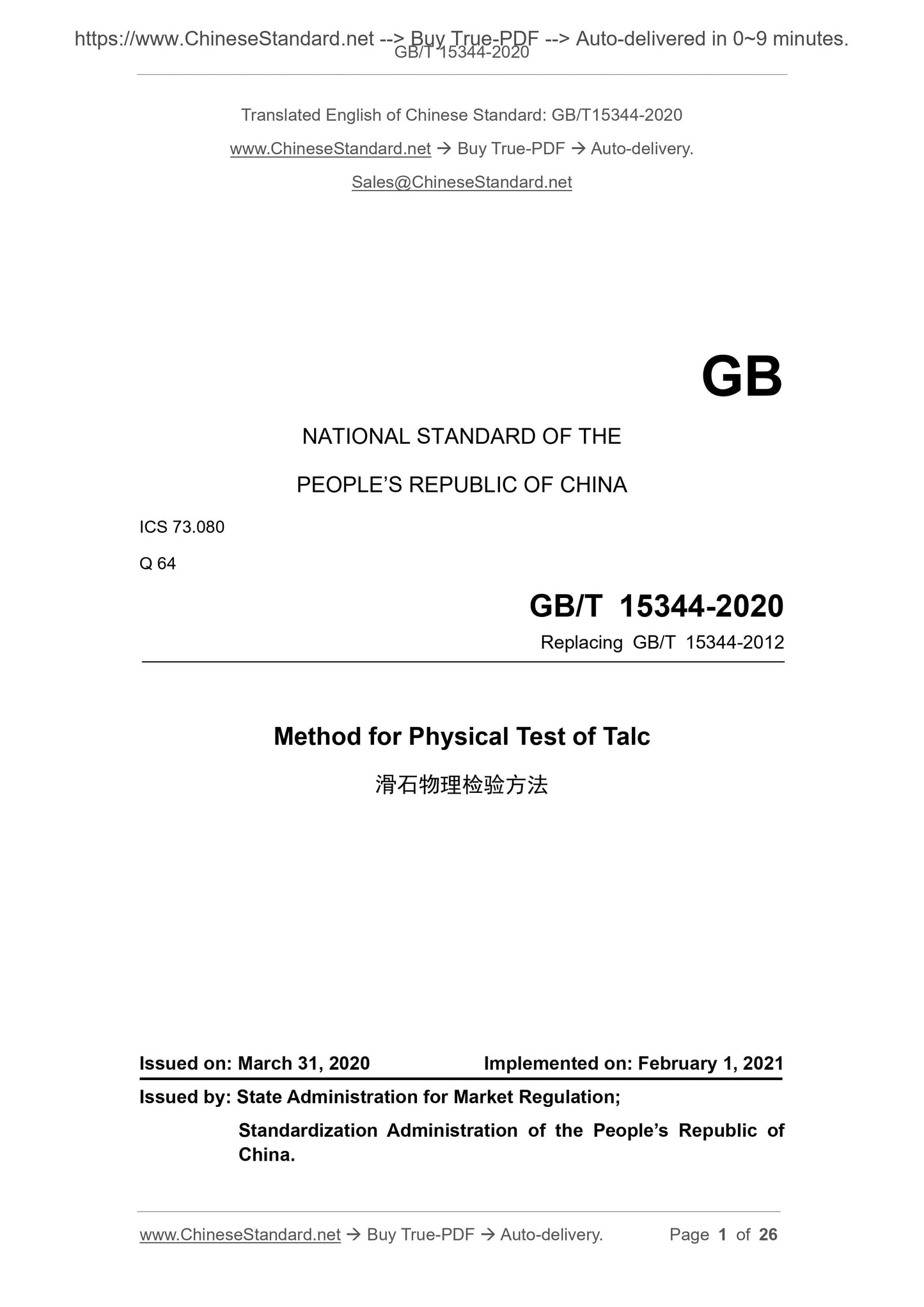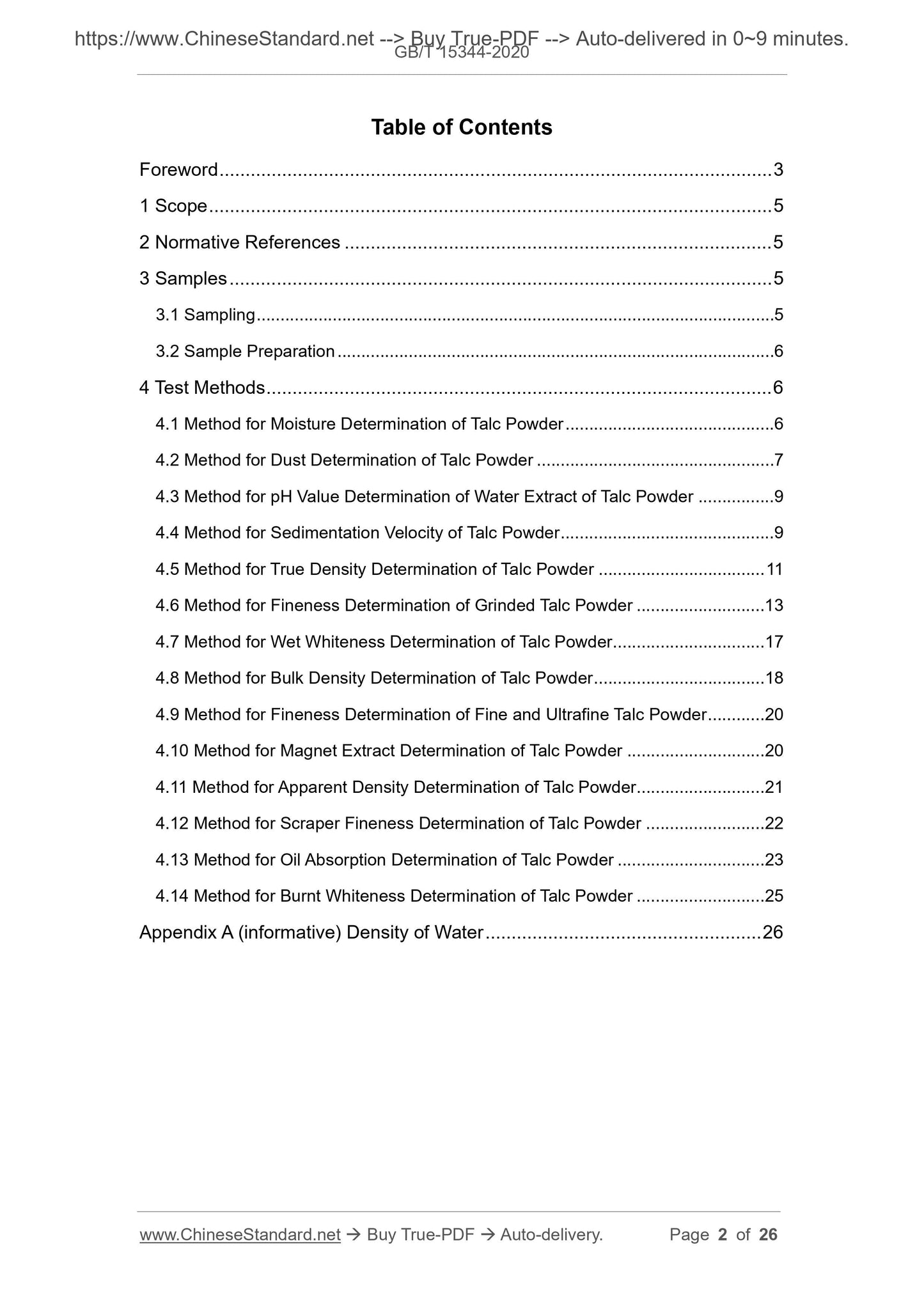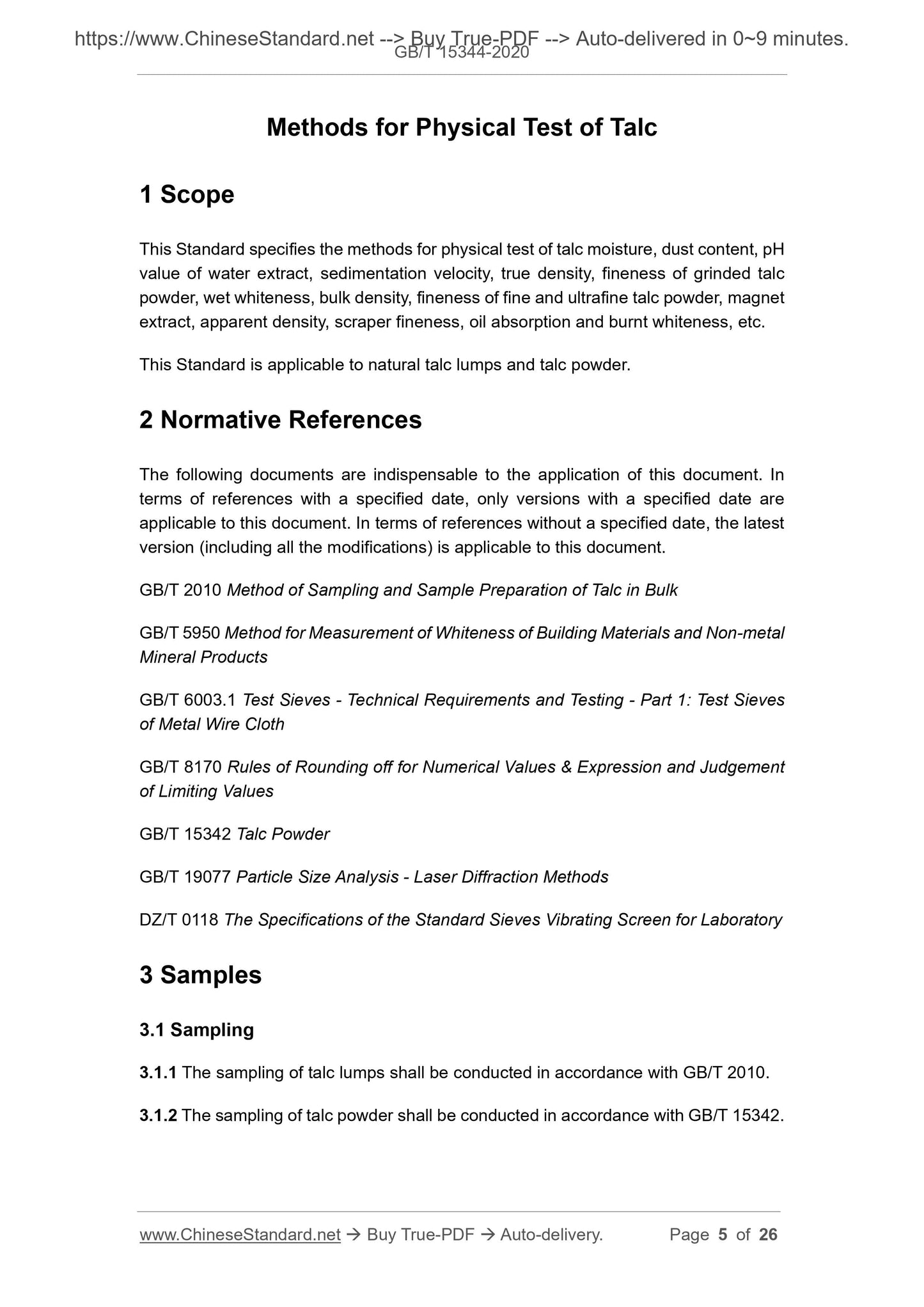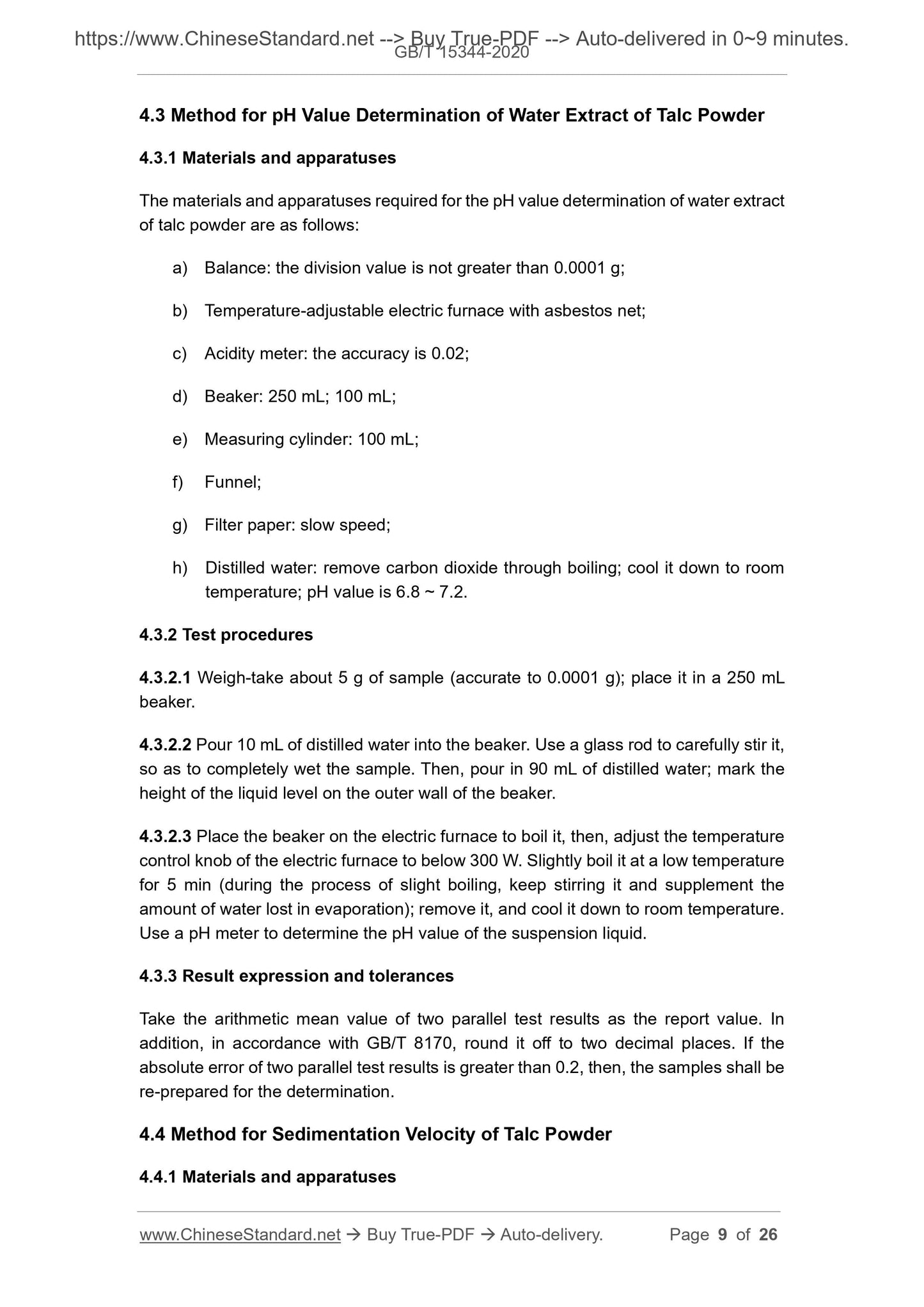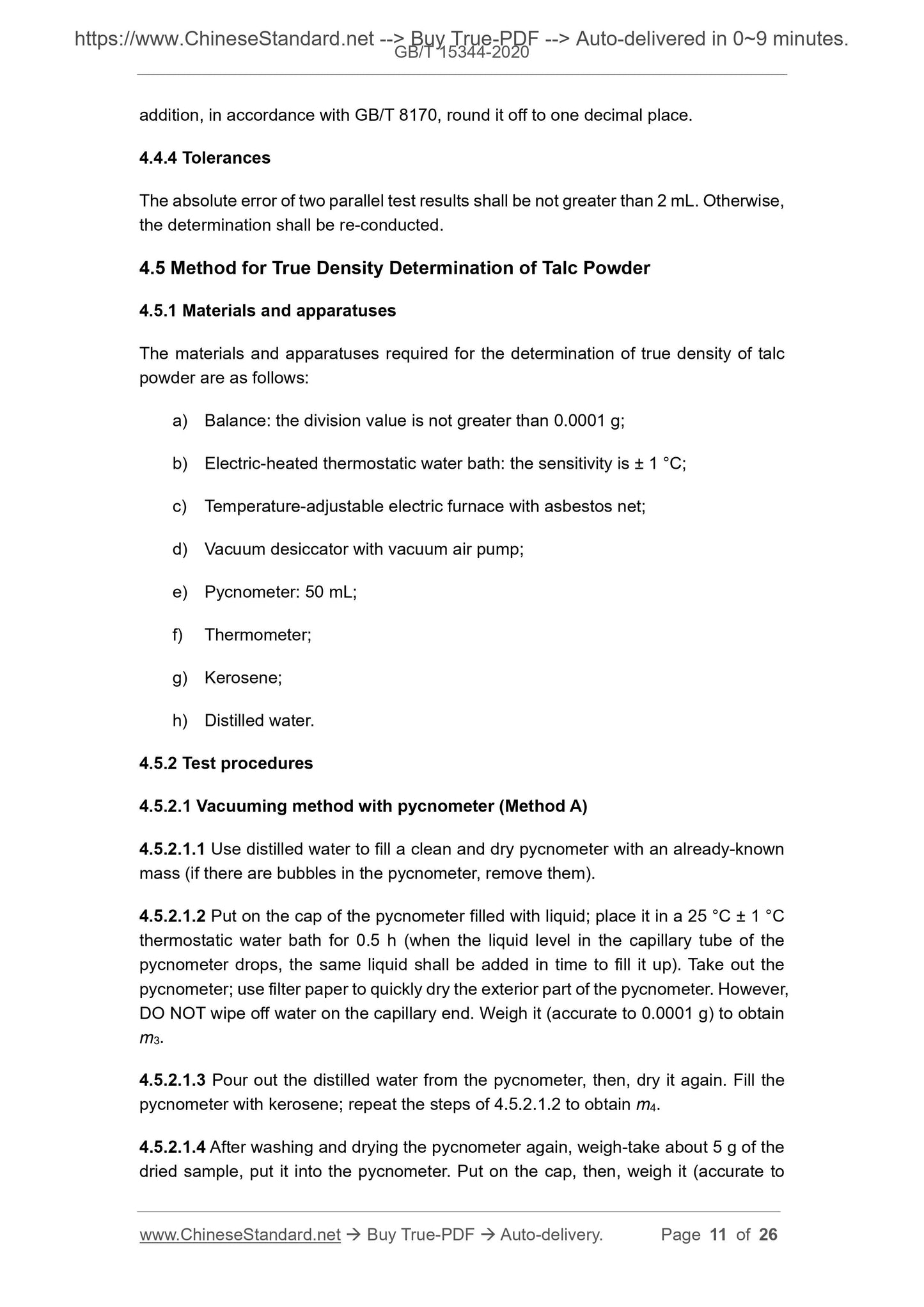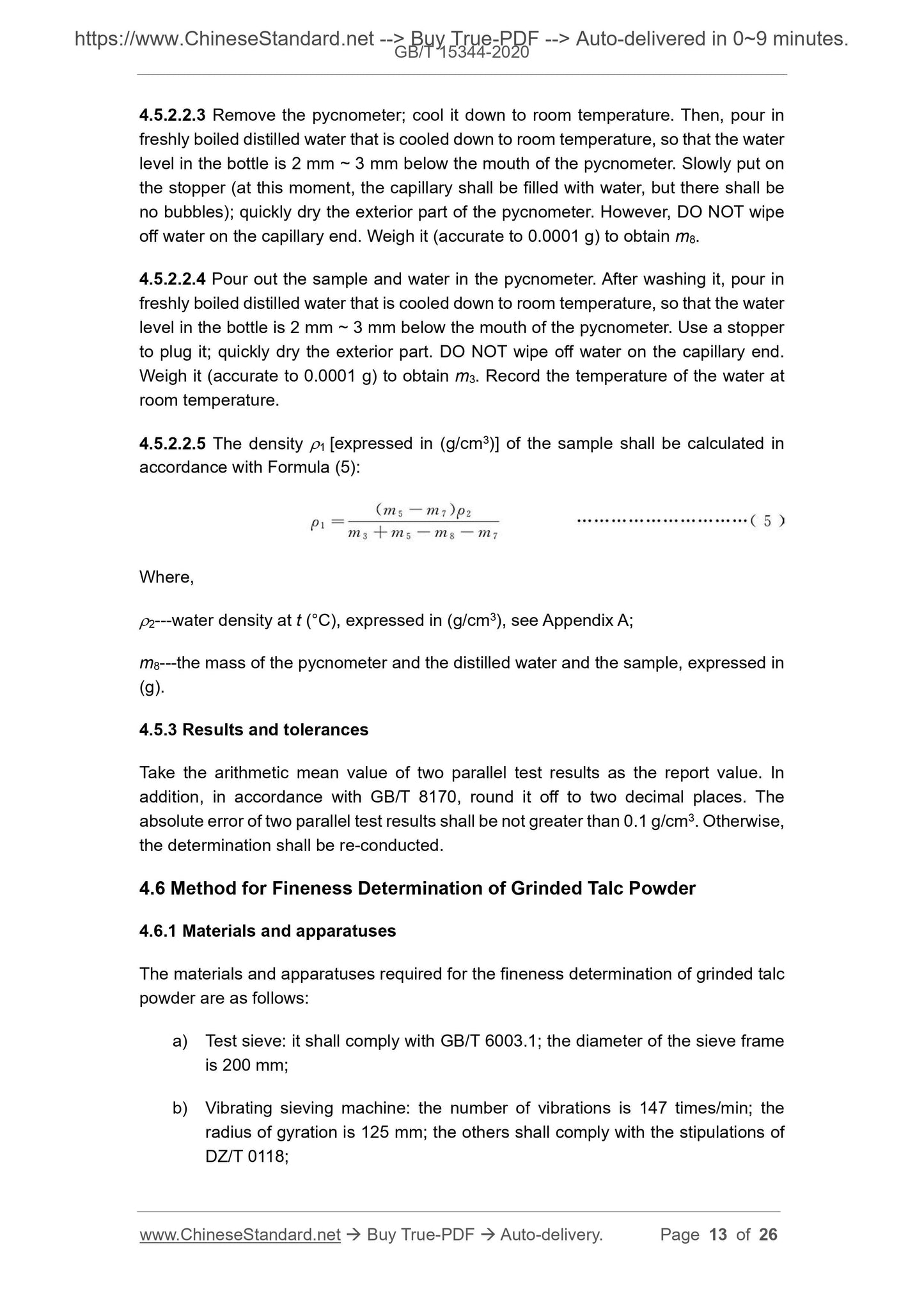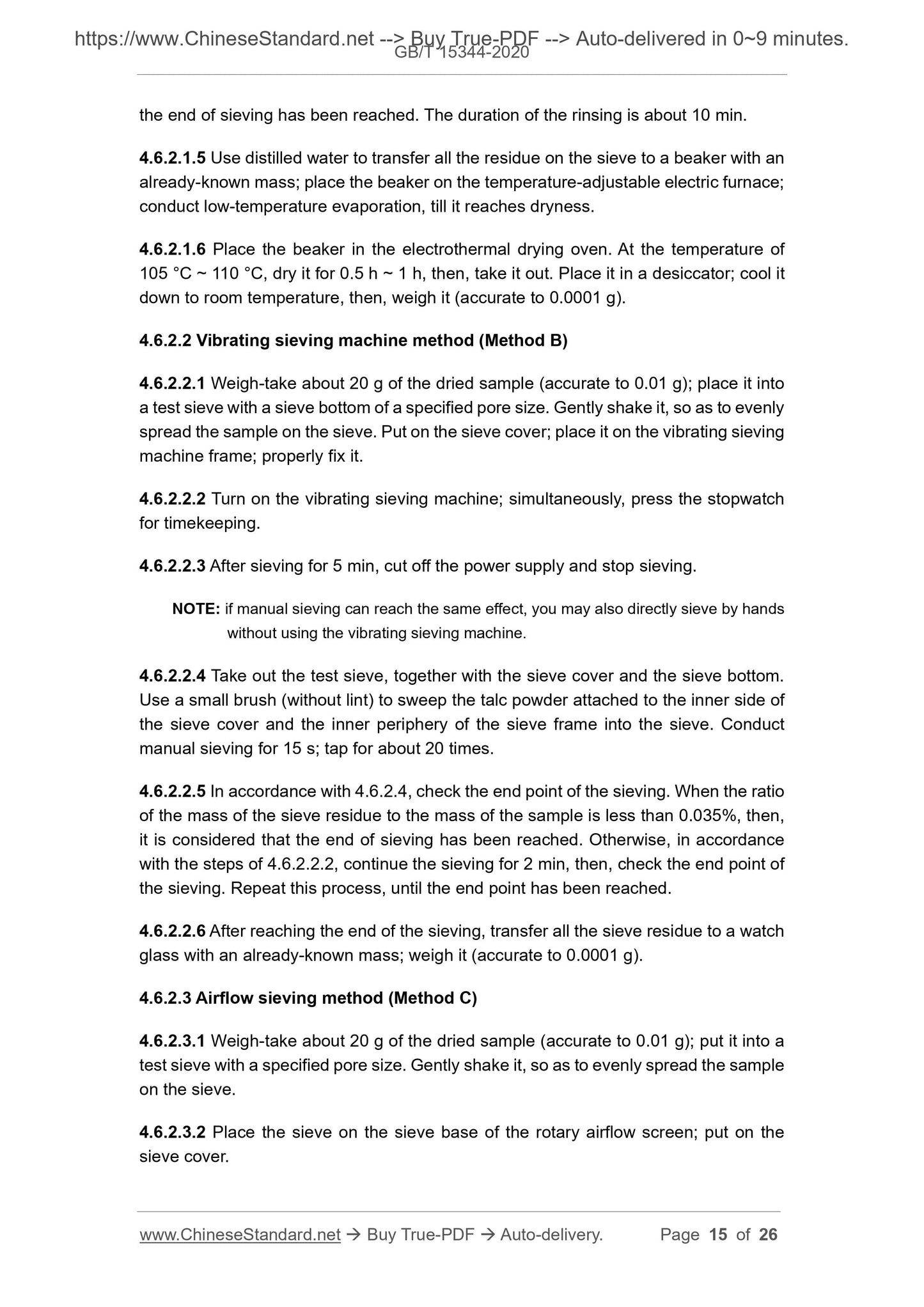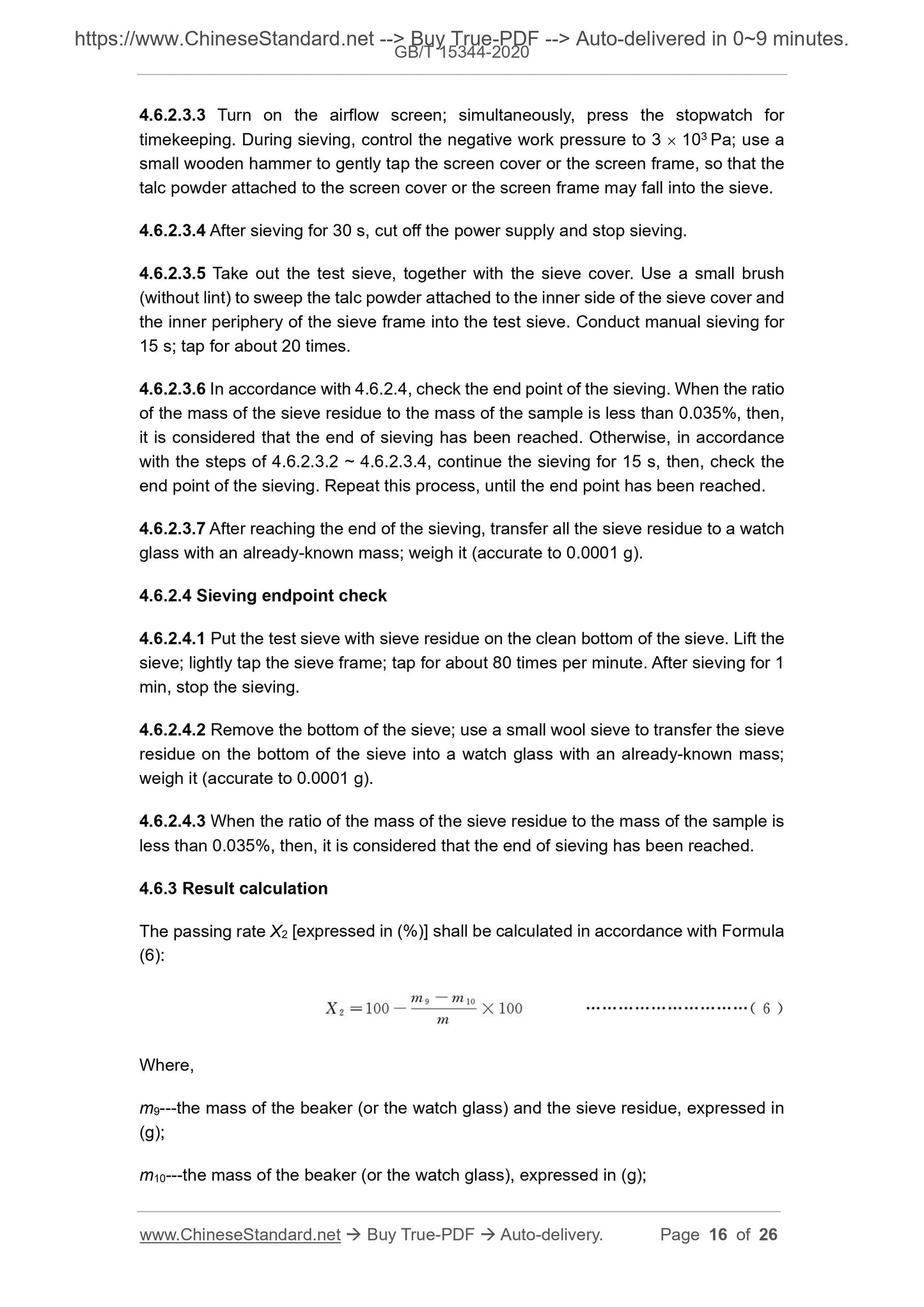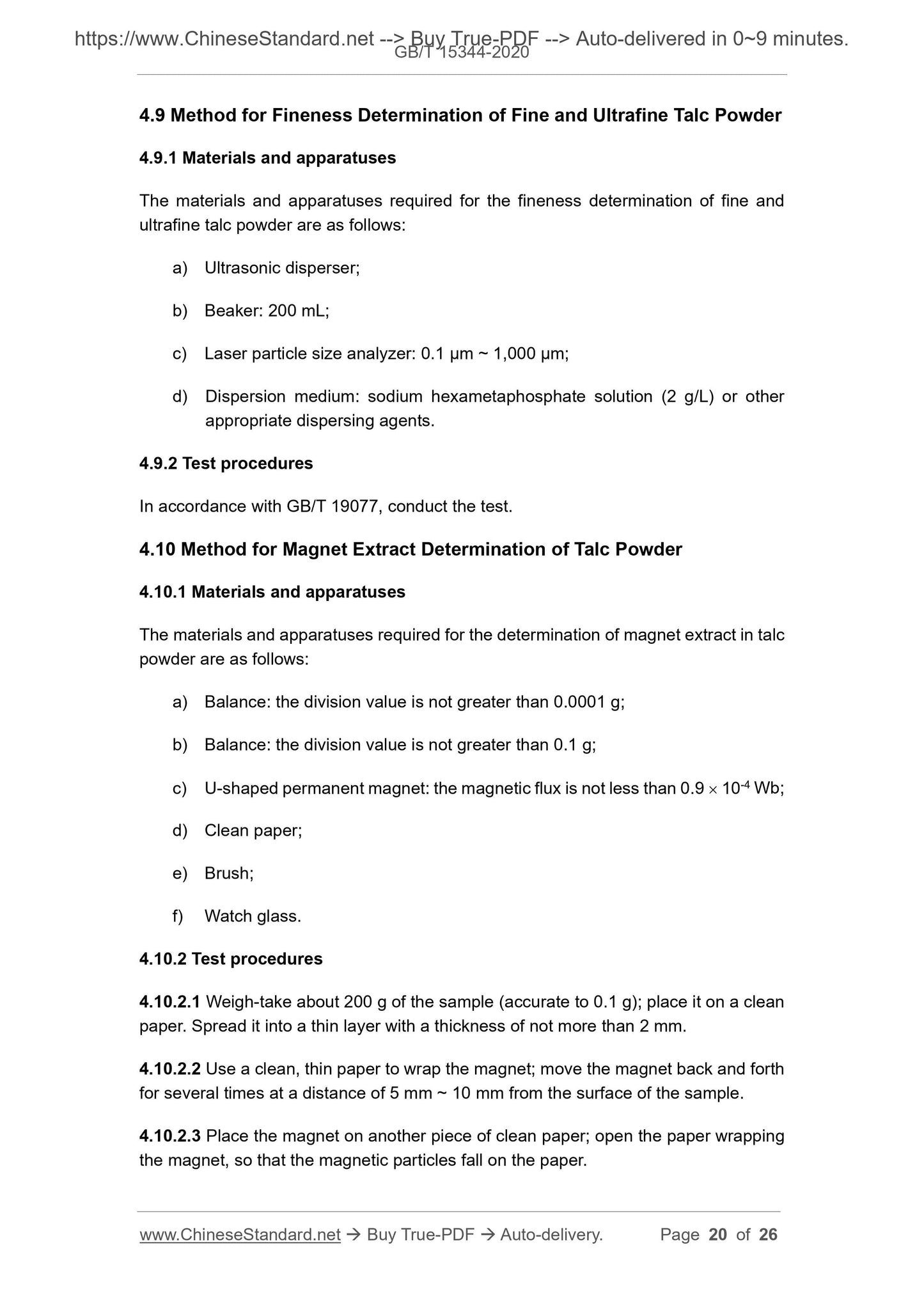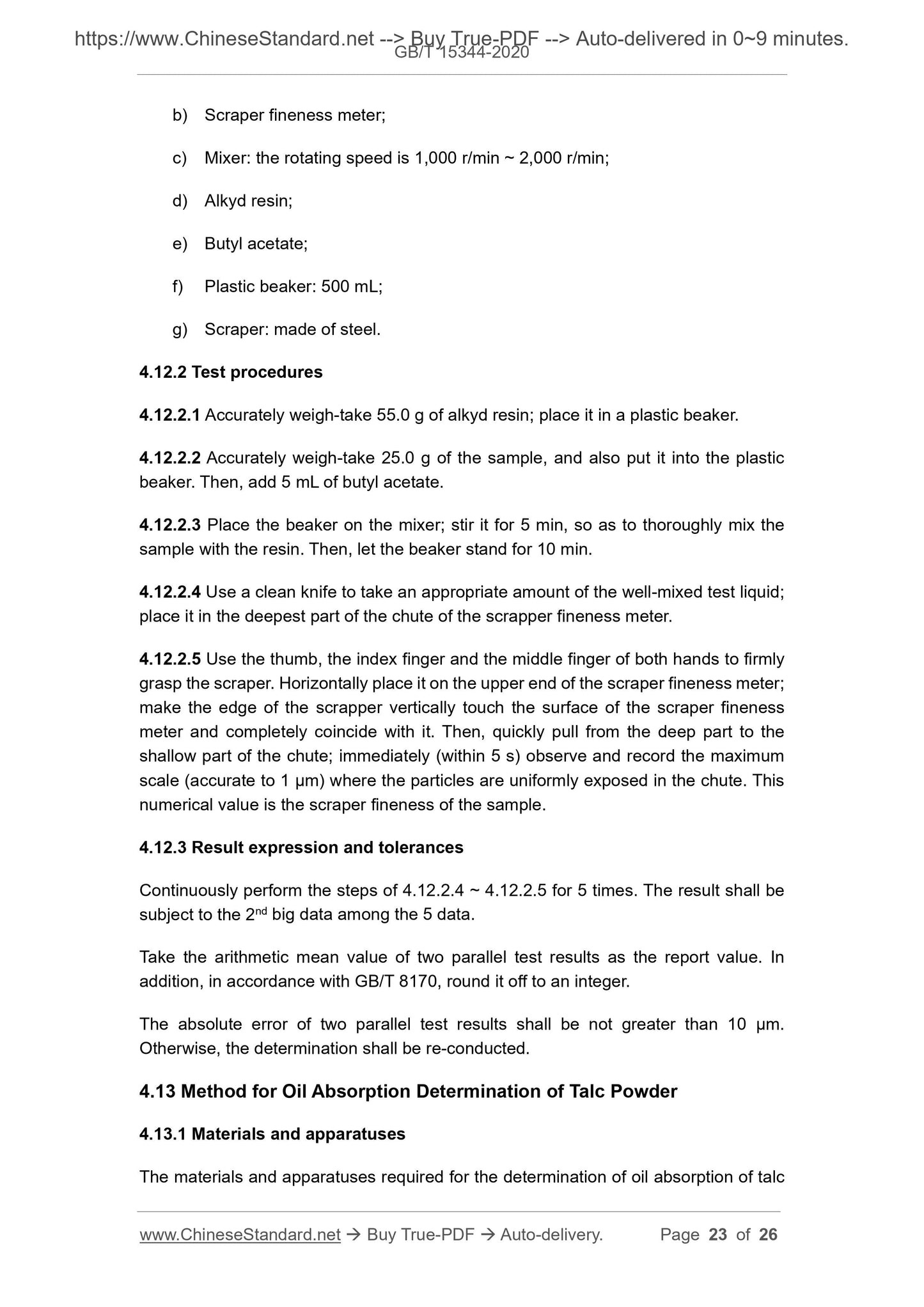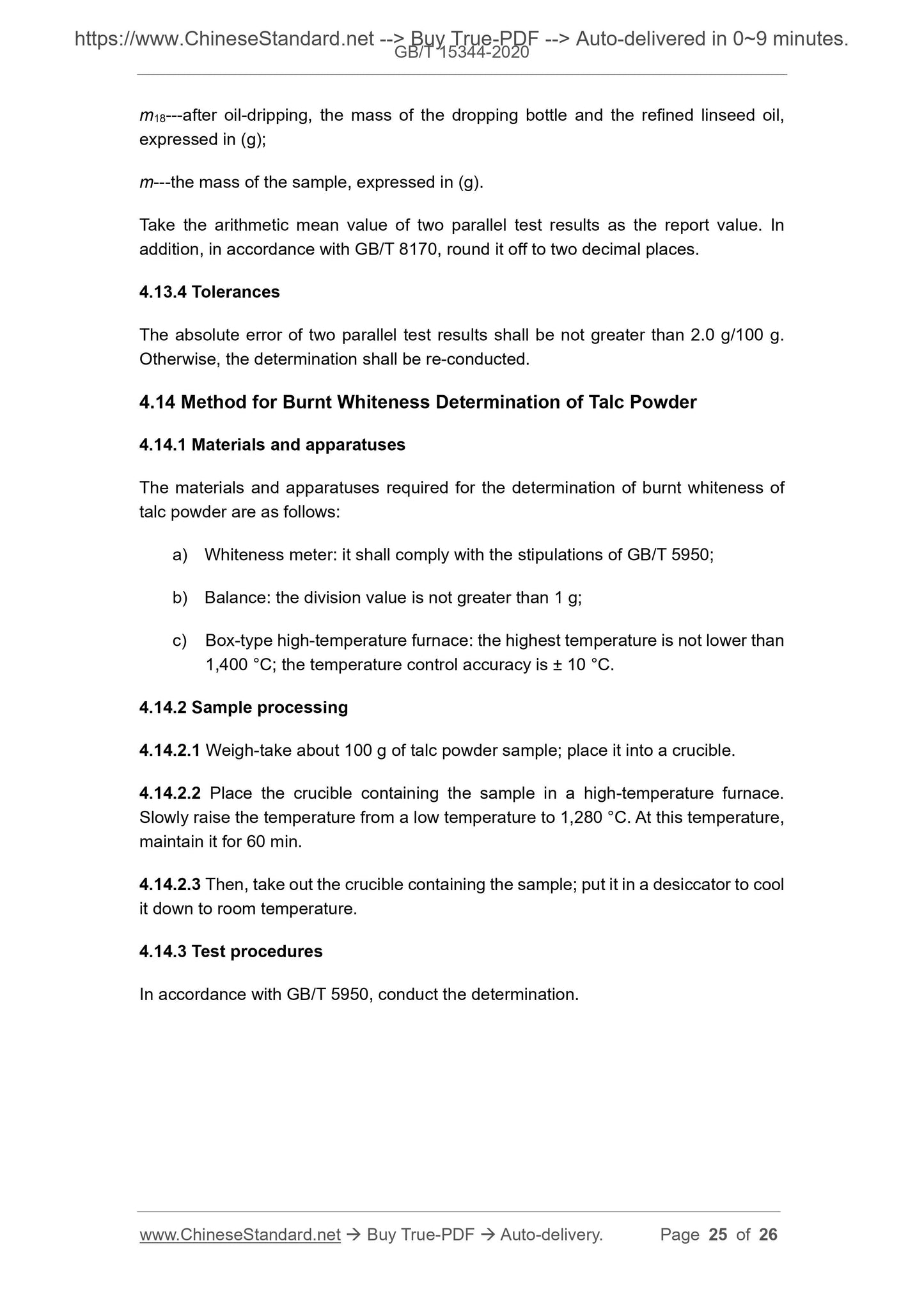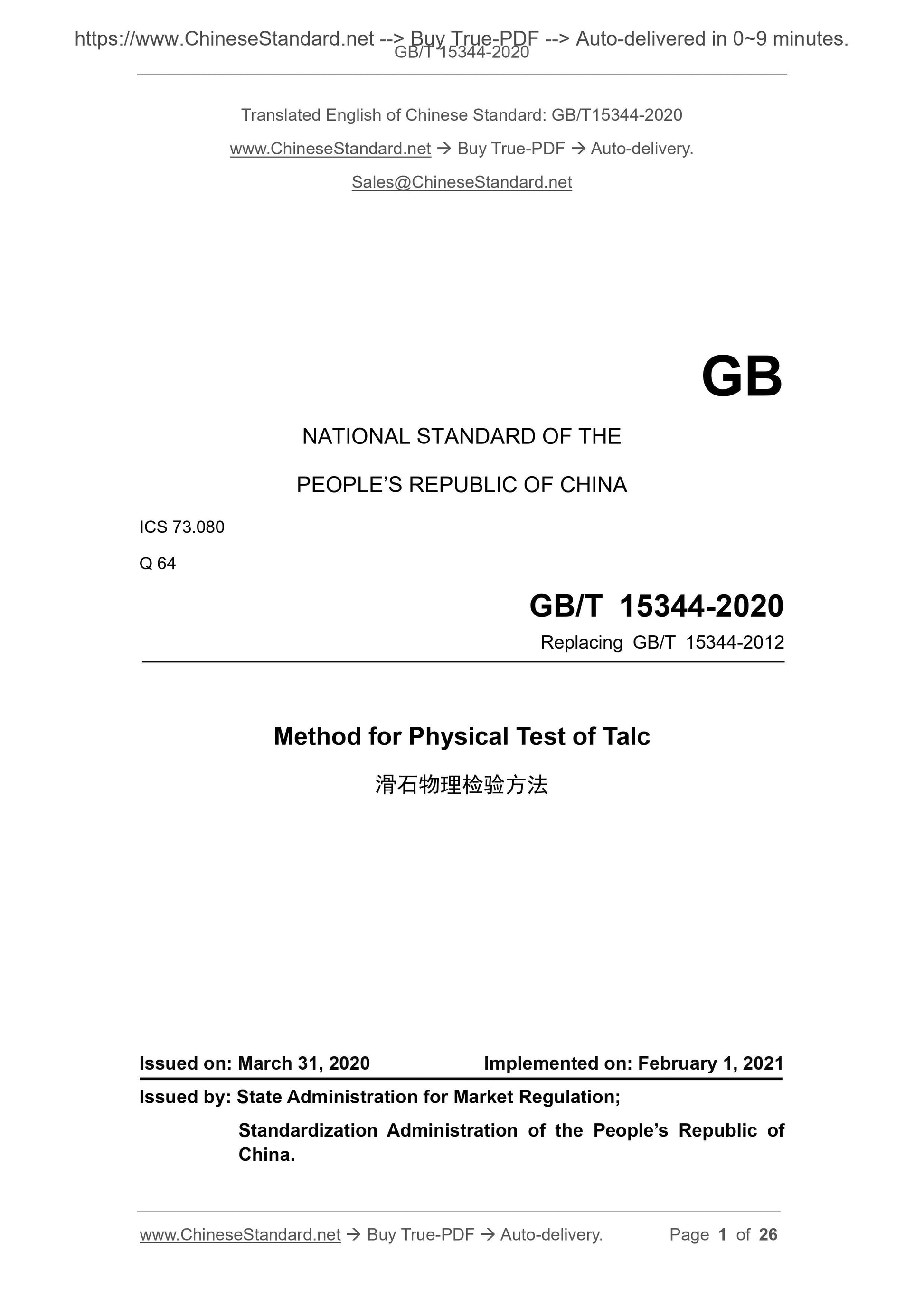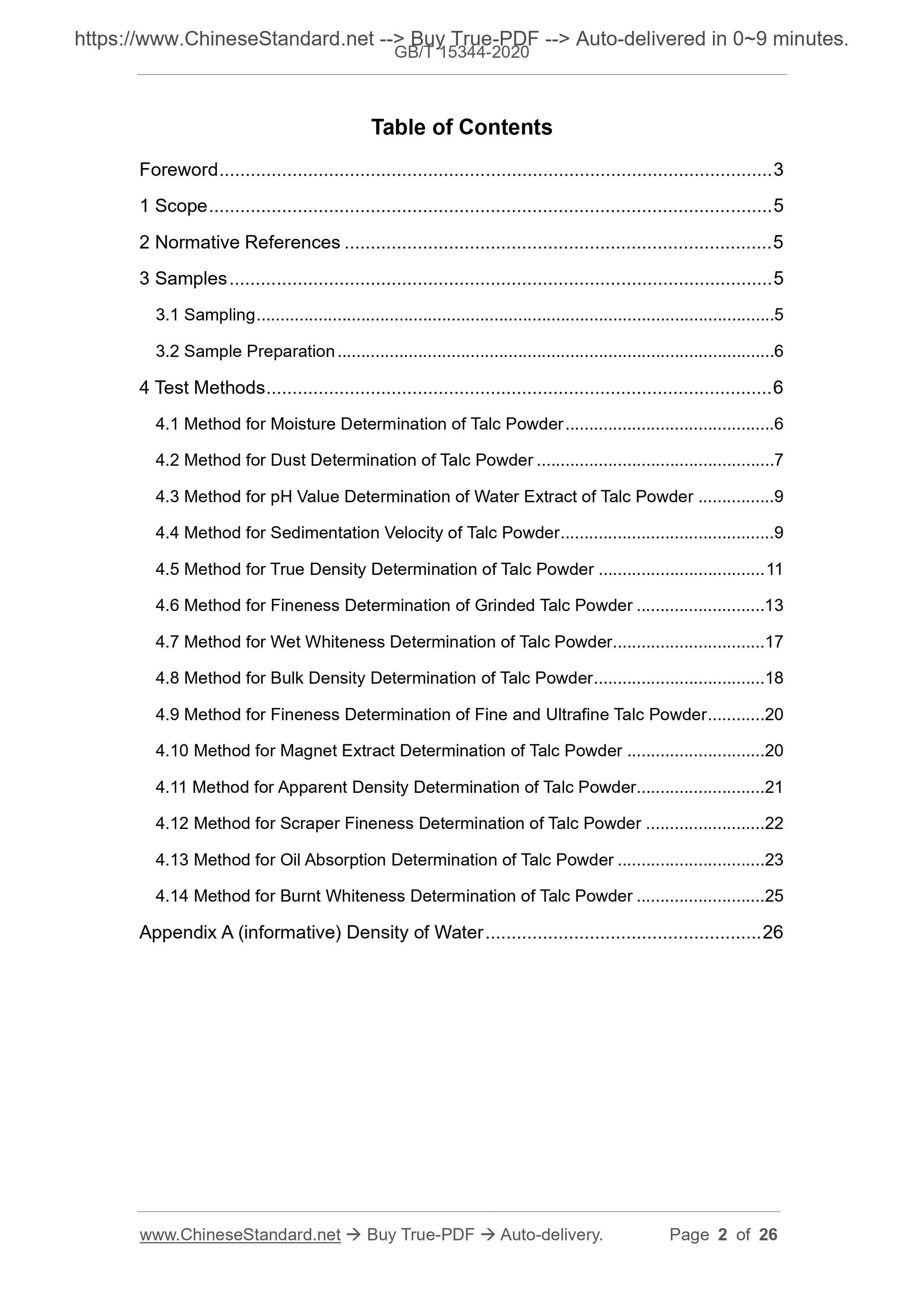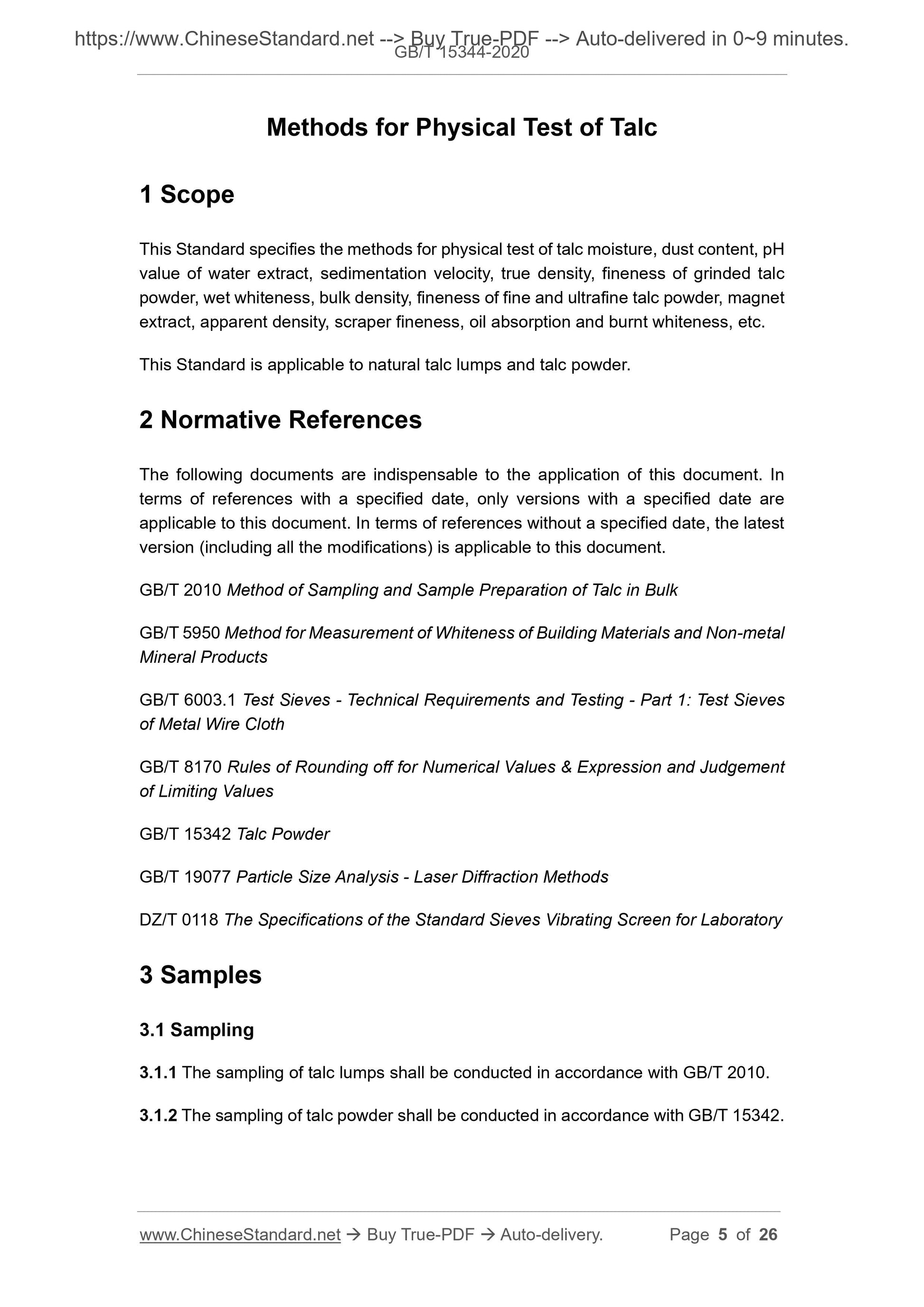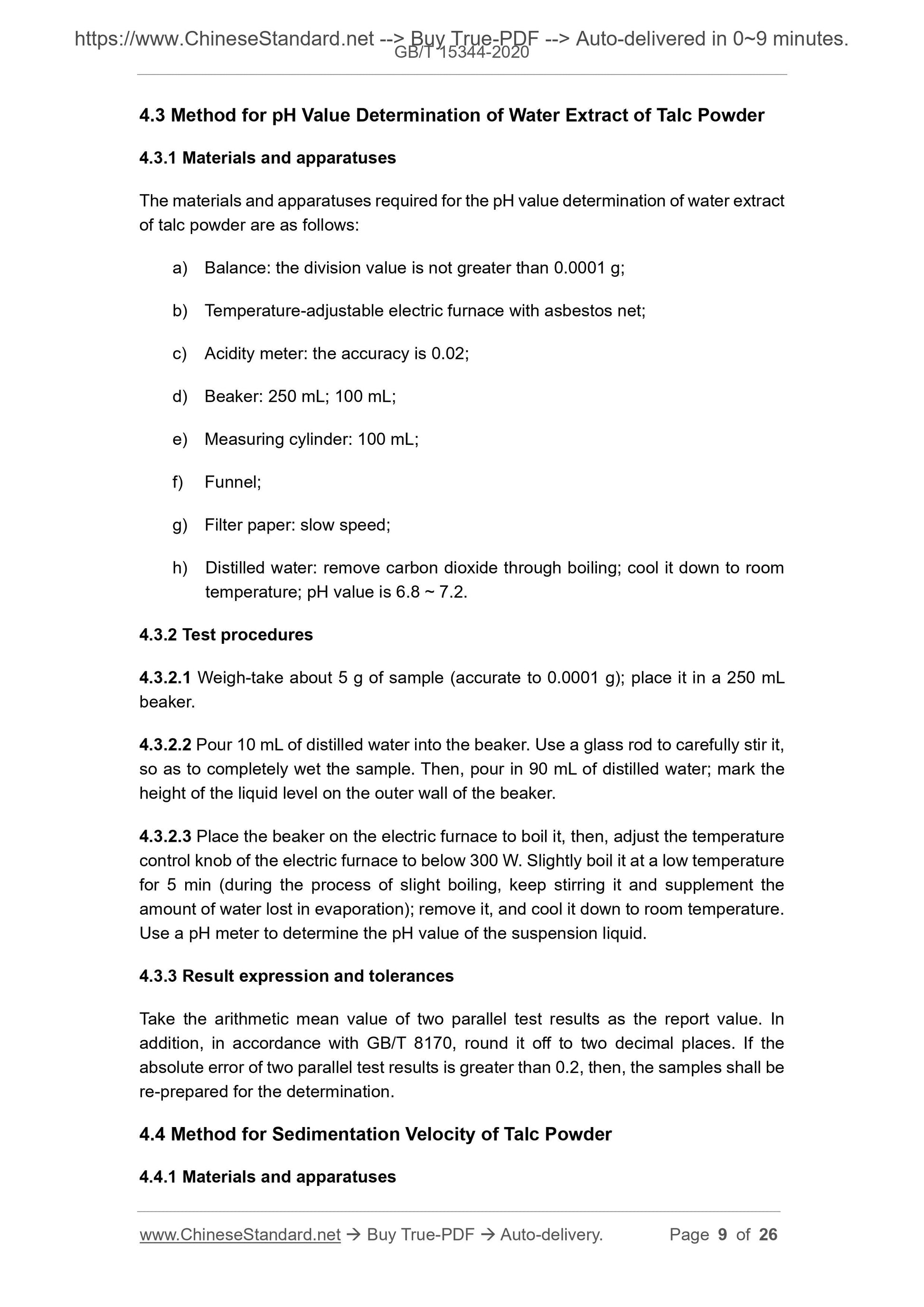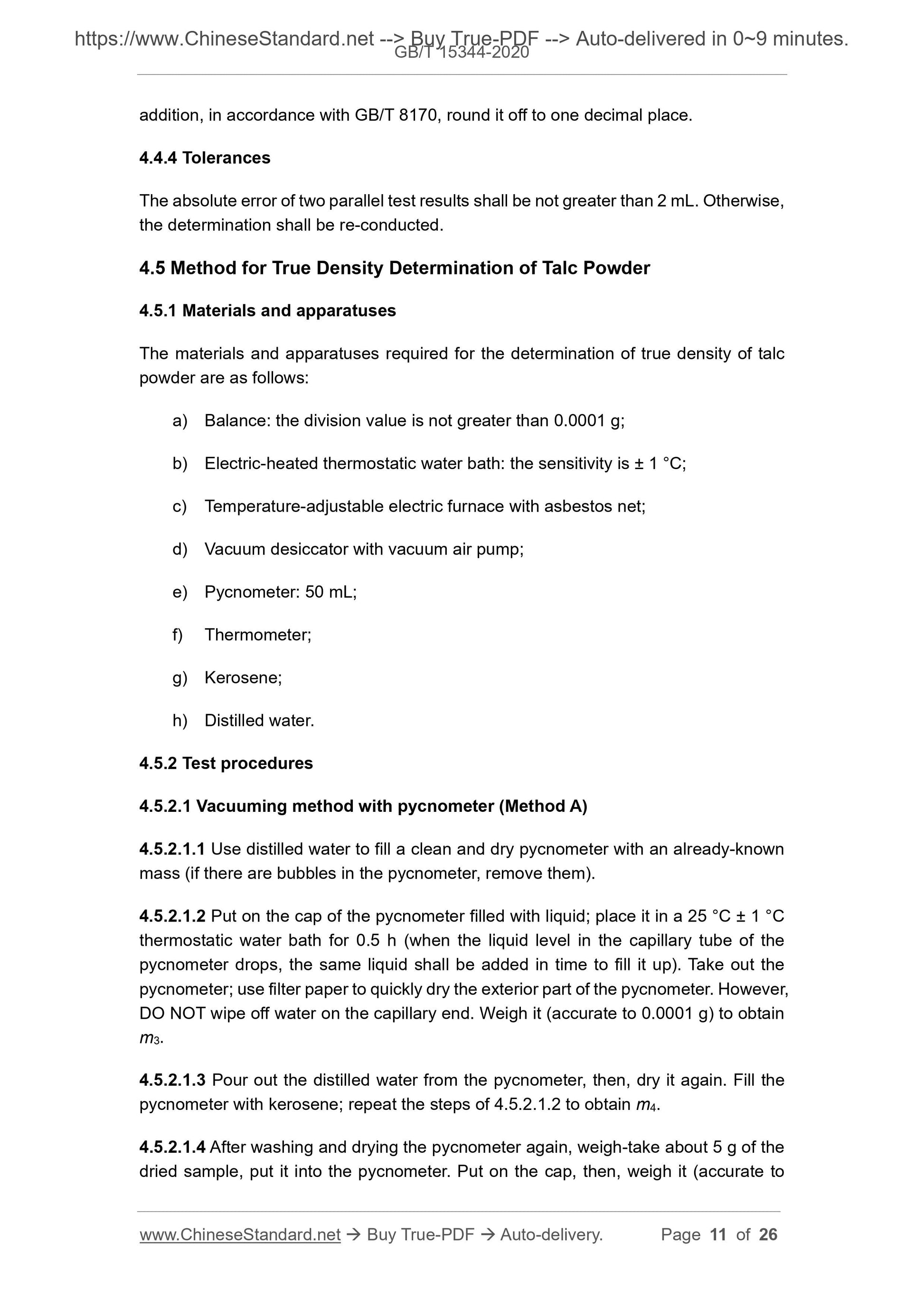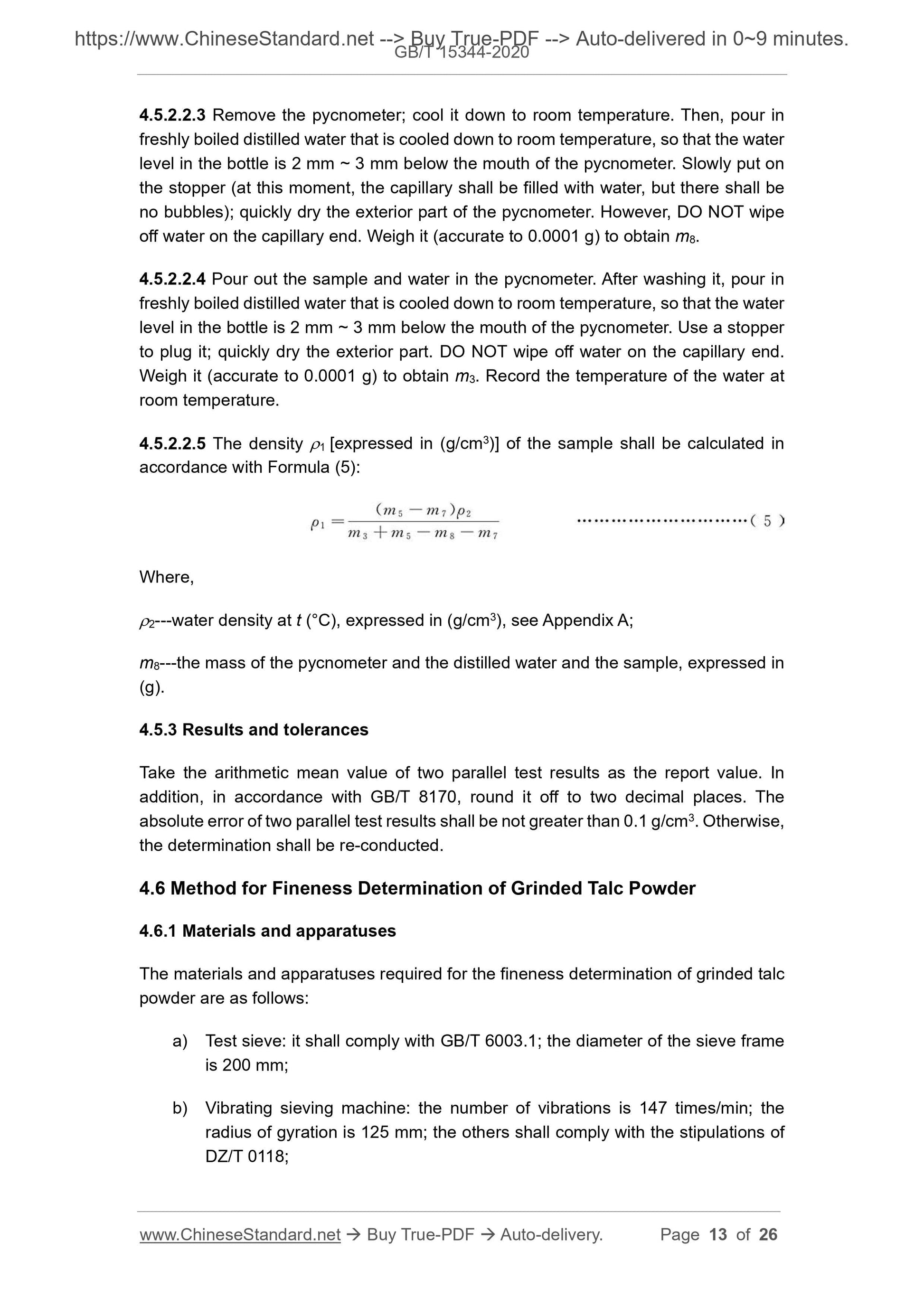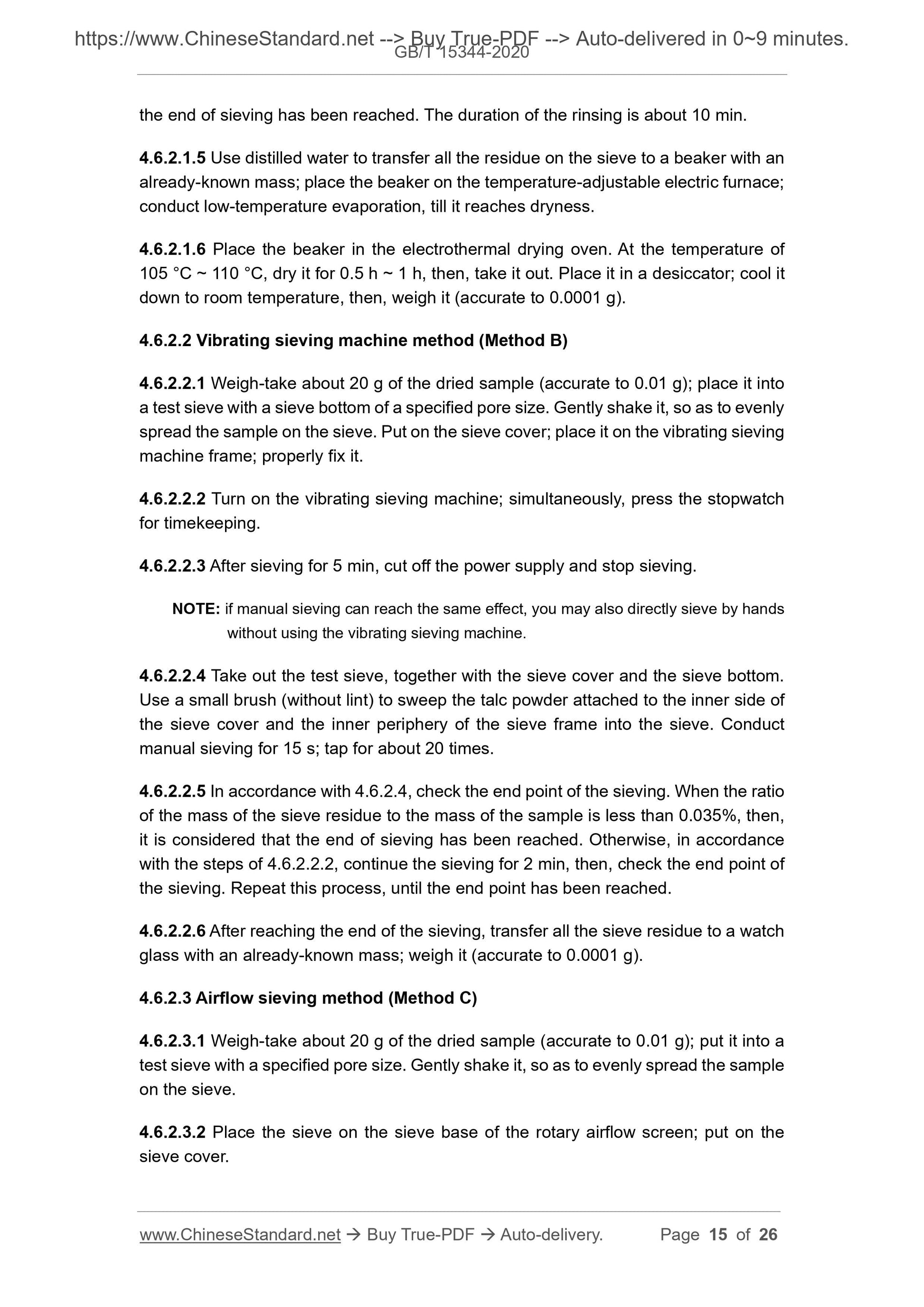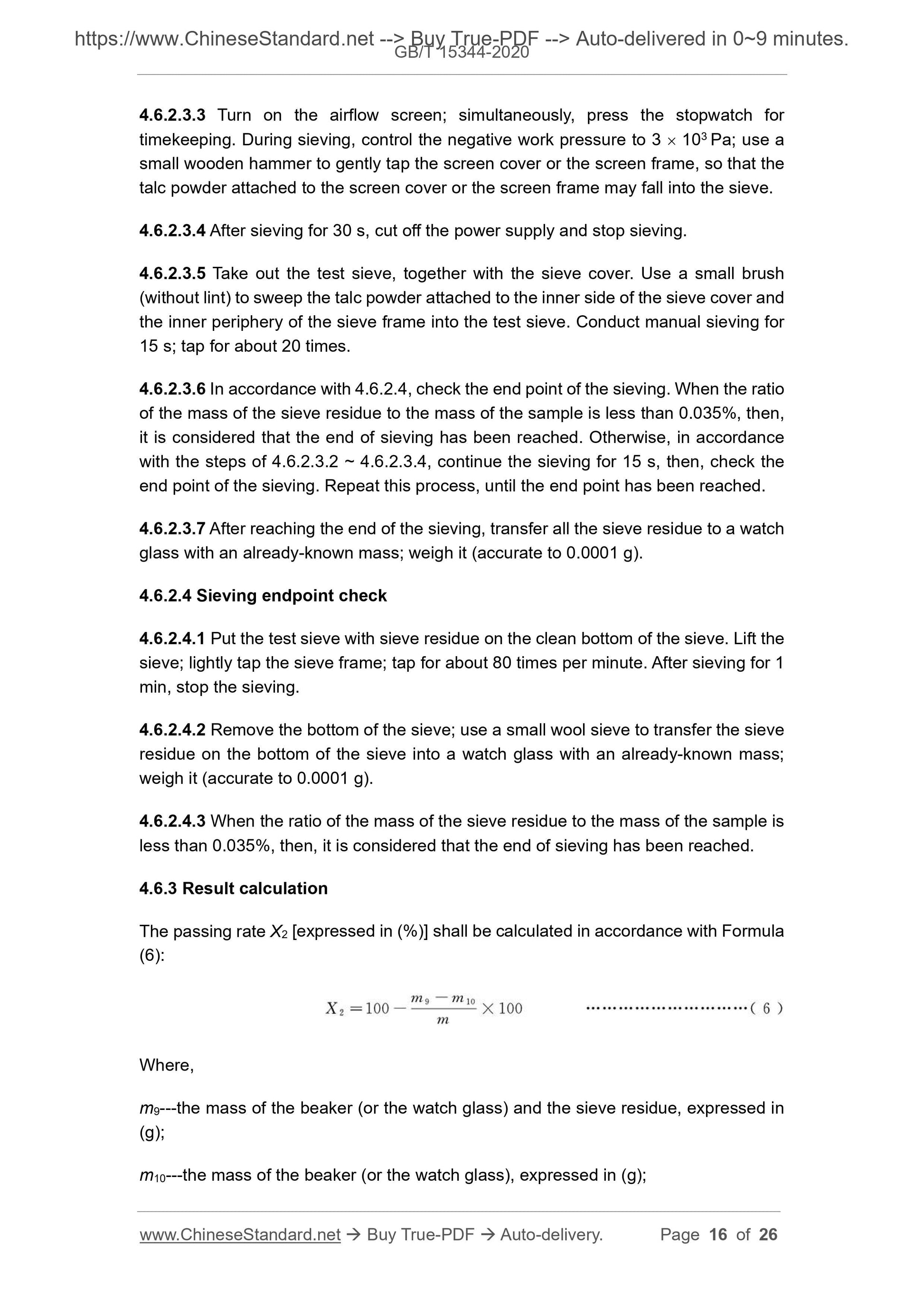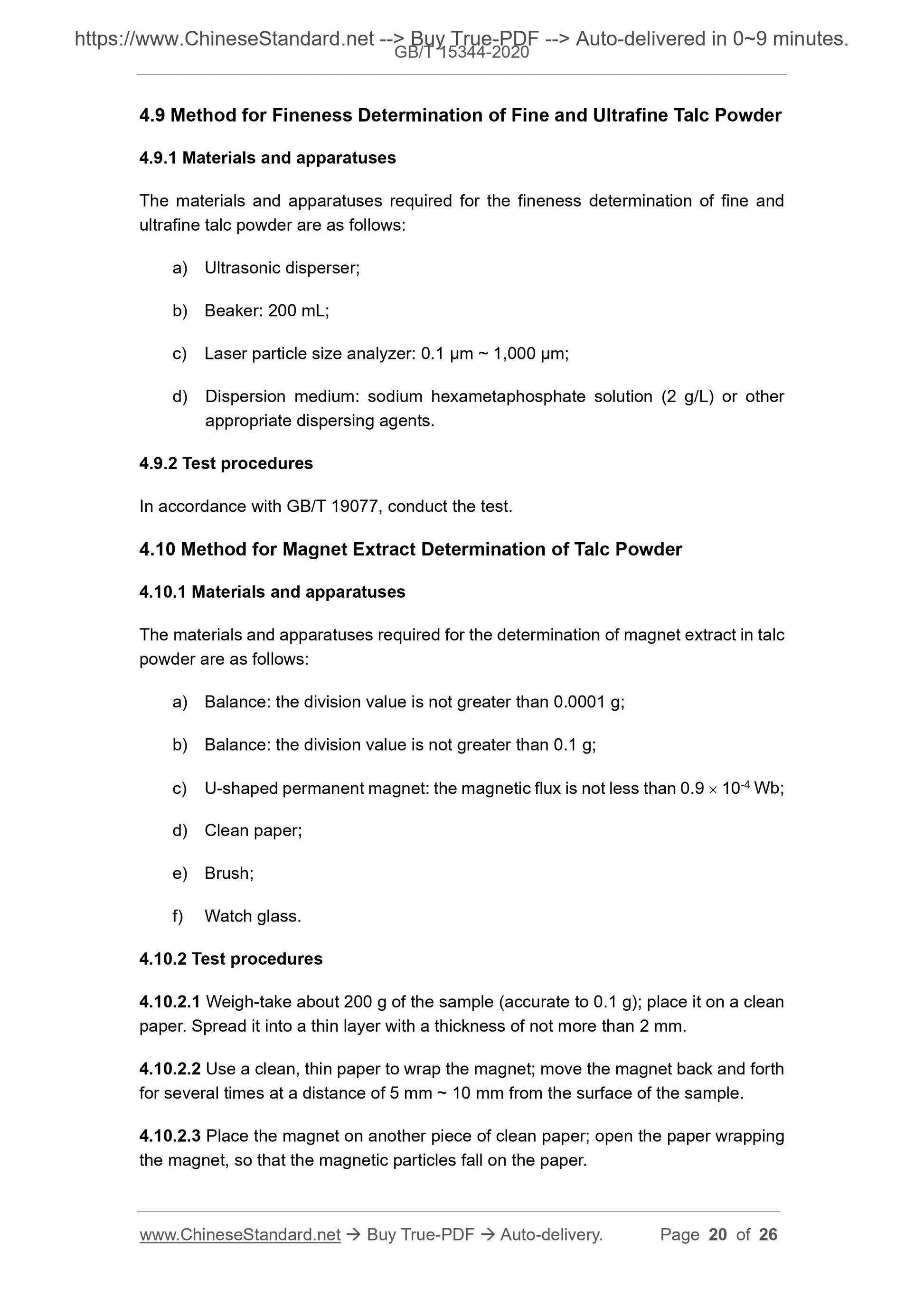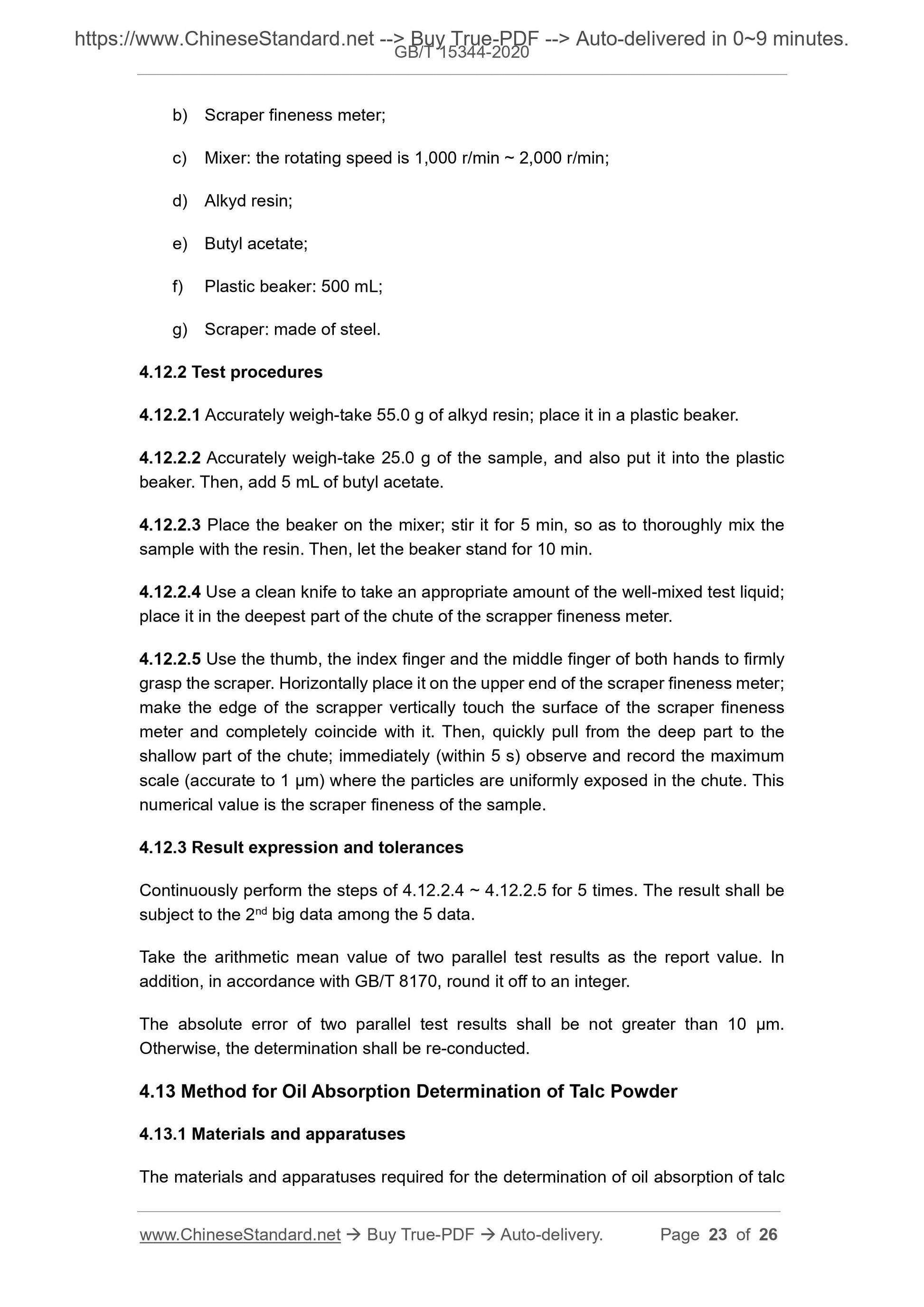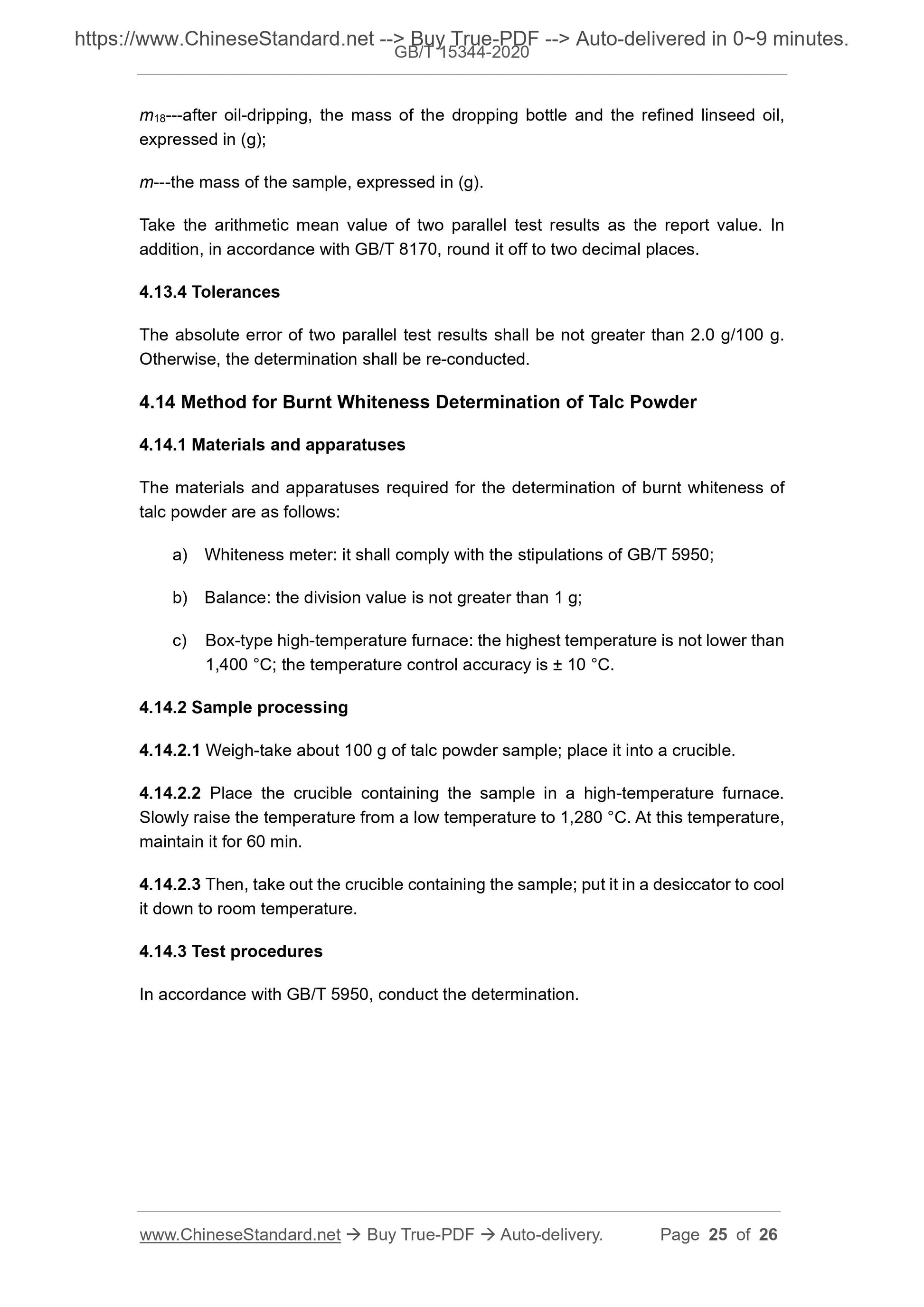1
/
of
11
www.ChineseStandard.us -- Field Test Asia Pte. Ltd.
GB/T 15344-2020 English PDF (GB/T15344-2020)
GB/T 15344-2020 English PDF (GB/T15344-2020)
Regular price
$245.00
Regular price
Sale price
$245.00
Unit price
/
per
Shipping calculated at checkout.
Couldn't load pickup availability
GB/T 15344-2020: Method for Physical Test of Talc
Delivery: 9 seconds. Download (and Email) true-PDF + Invoice.Get Quotation: Click GB/T 15344-2020 (Self-service in 1-minute)
Newer / historical versions: GB/T 15344-2020
Preview True-PDF
Scope
This Standard specifies the methods for physical test of talc moisture, dust content, pHvalue of water extract, sedimentation velocity, true density, fineness of grinded talc
powder, wet whiteness, bulk density, fineness of fine and ultrafine talc powder, magnet
extract, apparent density, scraper fineness, oil absorption and burnt whiteness, etc.
This Standard is applicable to natural talc lumps and talc powder.
Basic Data
| Standard ID | GB/T 15344-2020 (GB/T15344-2020) |
| Description (Translated English) | Method for Physical Test of Talc |
| Sector / Industry | National Standard (Recommended) |
| Classification of Chinese Standard | Q64 |
| Classification of International Standard | 73.080 |
| Word Count Estimation | 17,142 |
| Date of Issue | 2020-03-31 |
| Date of Implementation | 2021-02-01 |
| Issuing agency(ies) | State Administration for Market Regulation, China National Standardization Administration |
Share
